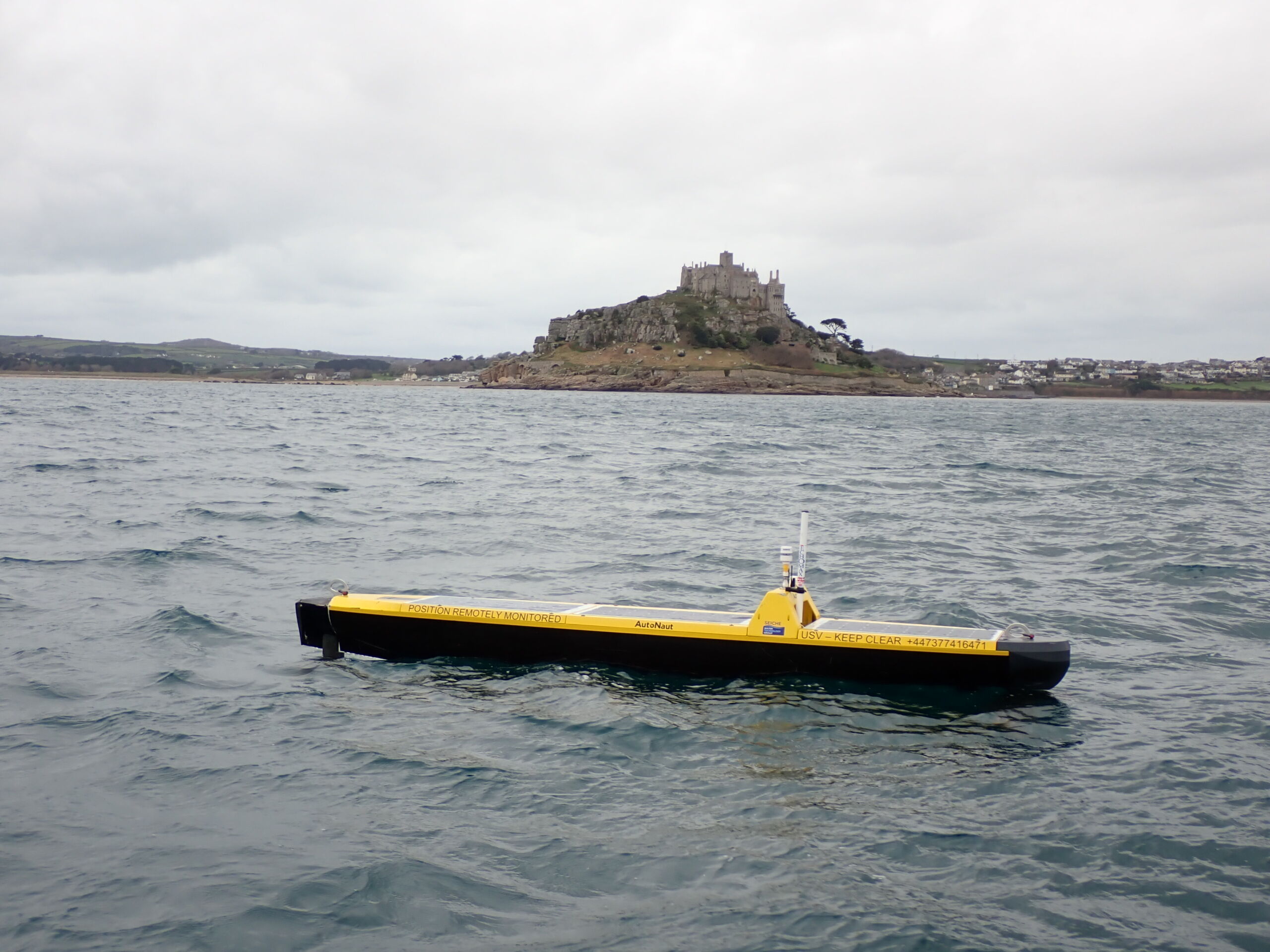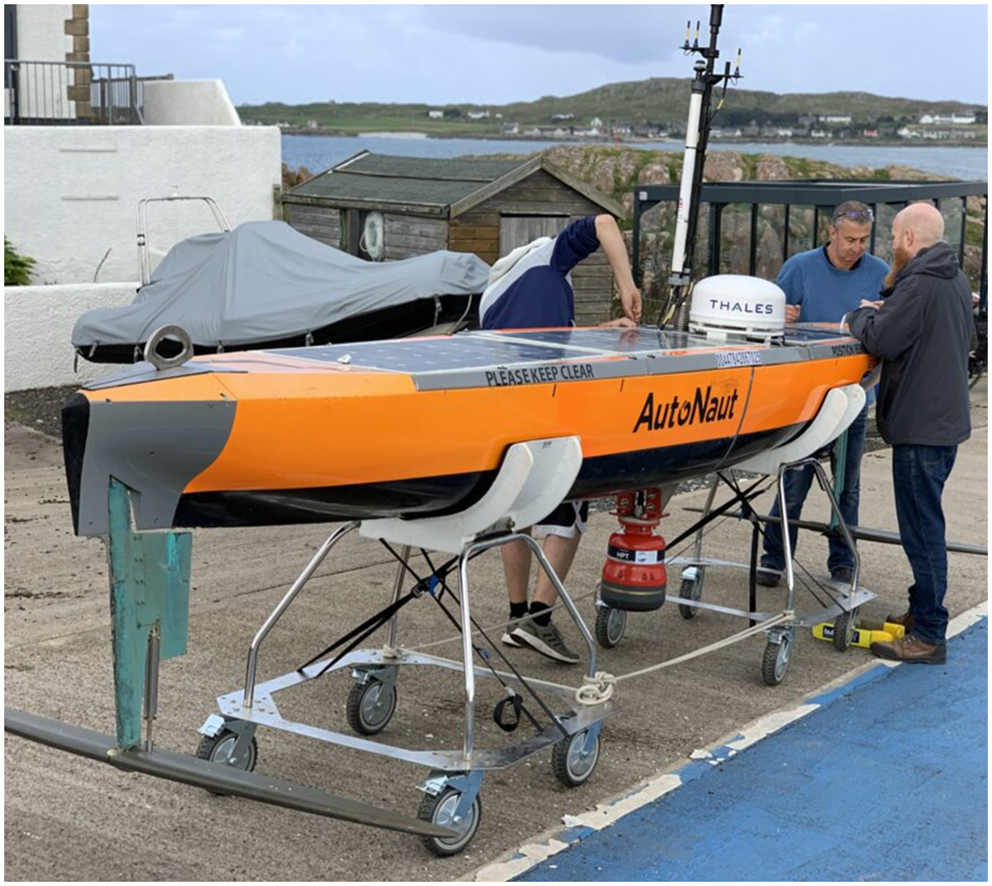In the 25 years since Dynautics was established (take a look at our company timeline here), we have encountered a wide range of vessels, missions and combinations of propulsors and steering devices, for both surface and subsurface vessels. The team has developed methods to combine control parameters in different ways to suit the vessel and its mission requirements, and we have also supplied control systems for wind and wave-propelled USVs.
Optimising limited energy supply
Using wave energy for propulsion enables zero carbon emissions but presents challenges. Propulsion tends to be the biggest consumer of energy on most USVs, far outstripping the needs of the control system or instruments. Ultimately, the limited supply of energy for propulsion can be a limiting factor in the vessel’s range and endurance.
Wave powered craft, such as the USVs produced by AutoNaut, can keep going for many weeks, thousands of miles from land, because they need no battery or fuel for propulsion. Instead, they rely on the slow but inexorable supply of energy from the waves. Speeds may be slow, but electrically powered USVs can cover great distances over long periods, making them an ideal choice where long-term persistence is important.
Dynautics has worked with the AutoNaut team since 2013, supplying customised platform control systems for their USVs, with low power satellite communications and autopilot systems to control direction and follow mission plans.

AutoNaut Oban entering Penzance after 115 days at sea, covering more than 4000 nautical miles gathering data on the Atlantic shelf break – credit AutoNaut
Efficiency and resilience
Dynautics has also provided a bespoke system that manages battery charging from photovoltaic panels and the power supply for instruments and communications. This ‘power generation controller’ is designed to provide remotely monitored and remotely resettable circuit breakers which swiftly protect the system in the event of overload in any circuit. Surge and trip levels can be adjusted on the fly, and instruments can be switched on or off over a satellite communications link designed to use minimal energy. The whole control system is designed to use very efficient, low power processor boards, to optimise the use of solar energy.
Zero carbon data collection
A fleet of AutoNaut USVs is now assisting the Barbados Meteorological Service (BMS) to help predict the path and strength of approaching hurricanes. Stationed hundreds of miles east of Barbados, these USVs transmit real time data. It is hoped that the vessels will support improved forecasting of tropical storms, to better predict their impact and enable timely warning systems.
Another AutoNaut USV completed a groundbreaking mission to recover data from a Sonardyne seabed sensor located 1,800 metres underwater in the Rockall Trough, in the Atlantic Ocean northwest of Scotland and Ireland. Operated remotely via satellite, the wave-propelled vessel acted as a zero-carbon communications gateway to collect deep sea data for scientists onshore at the Scottish Association for Marine Science, and enabled them to recalibrate the instrument via satellite.

Launching AutoNaut Jura on a zero-carbon operation to collect data from a sensor moored 1800m deep in the Rockall Trough – credit AutoNaut

